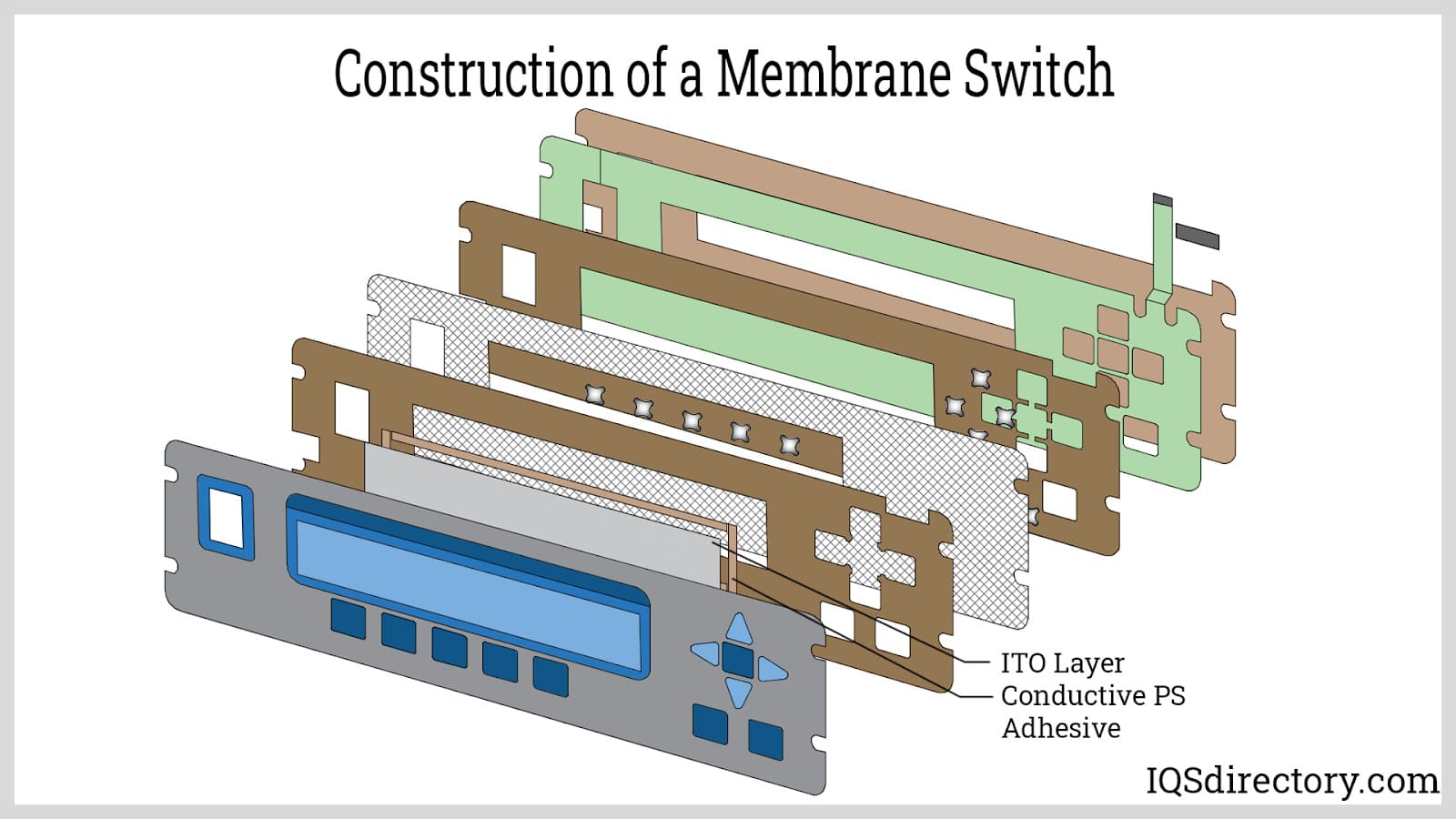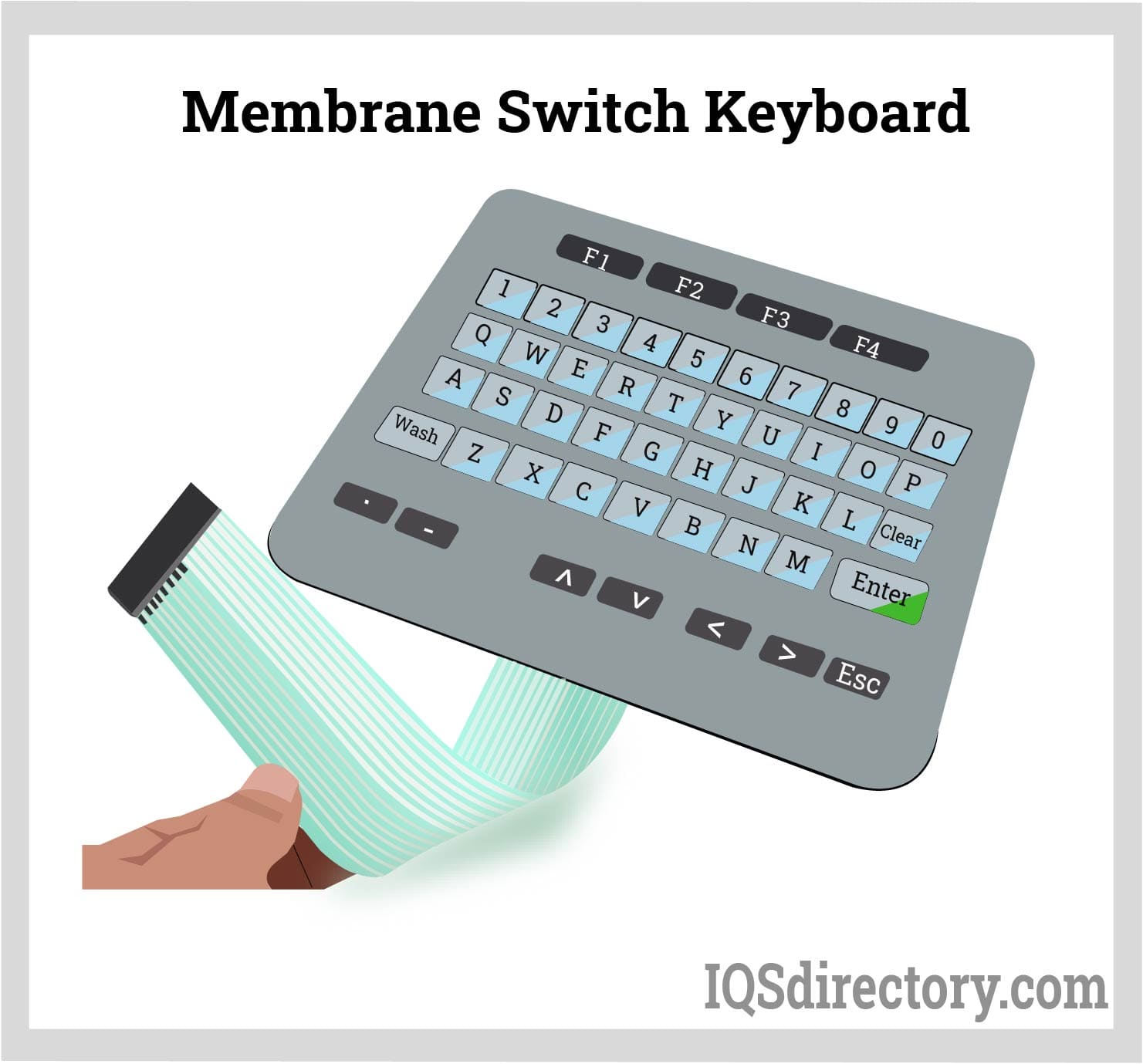The future of membrane switch in connected automotive systems
Comprehending the Value of Membrane Layer Change in Modern Electronics
Membrane layer switches are integral components in modern-day digital tools. They use a blend of functionality and design that improves user interaction. Their lightweight and durable nature makes them ideal for different applications. As industries evolve, the need for personalization and advanced attributes expands. Understanding how membrane layer switches over add to development exposes their relevance in shaping the future of electronics. What exists ahead for this modern technology?
The Essentials of Membrane Switch Over Innovation
Usually ignored, membrane layer switch technology plays an essential function in the modern electronics landscape. These gadgets, composed of several layers, function as interface for different digital products, ranging from house devices to medical tools. A typical membrane layer switch consists of a graphic overlay, a spacer layer, and a circuit layer, which are thoroughly constructed to create a functional interface.When pressure is put on the overlay, the circuit layer is completed, allowing signals to be transferred to the tool. This innovation is recognized for its convenience, allowing modification in shape, functionality, and style to satisfy particular customer demands. Additionally, membrane buttons are lightweight and slim, making them ideal for applications where space is a costs. Their resilience and resistance to environmental factors even more boost their allure, guaranteeing they can endure rough problems while preserving functionality. On the whole, membrane switch modern technology is essential to developing reliable and straightforward electronic gadgets

Key Benefits of Membrane Switches Over
Membrane layer changes offer several crucial advantages that make them a favored option in different electronic applications. Their style permits for a small type aspect, making it possible for suppliers to develop smooth and light-weight tools. Furthermore, membrane layer buttons are immune to dust, dampness, and chemicals, which boosts their durability and long life in requiring settings. The responsive comments offered by these switches can improve customer experience, making them instinctive and easy to operate.Furthermore, membrane layer buttons can be customized with varied graphics and shades, enabling unique branding possibilities. The production procedure is usually cost-effective, especially for high-volume manufacturing, as it lowers assembly time and simplifies design. Membrane switches over call for marginal upkeep, contributing to lower total functional expenses. These benefits underscore their growing popularity in modern electronics, where reliability and user-friendly interfaces are necessary.

Applications Throughout Different Industries
The convenience of membrane layer switches over enables their widespread fostering across various sectors. In the medical field, they are frequently utilized in diagnostic devices and person tracking systems, supplying a durable interface resistant to pollutants. The auto industry uses membrane layer buttons for dashboard controls, enhancing individual experience with streamlined styles that withstand severe conditions. In customer electronics, they act as control panels for gadgets such as microwaves and coffee machine, providing an easy to use user interface that is simple to clean. The aerospace field employs membrane layer switches in cabin controls, where reliability and area efficiency are extremely important. Furthermore, the commercial industry leverages these switches in equipment and control systems to assure robust operation popular environments. This wide variety of applications emphasizes the adaptability of membrane layer switches, making them important parts in enhancing capability and individual communication throughout varied technical landscapes.
Personalization and Style Adaptability

Future Trends in Membrane Switch Over Growth
Arising trends in membrane layer button advancement indicate a growing focus on enhanced performance and assimilation with clever innovations. see here now As customer need for more innovative digital devices boosts, manufacturers are concentrating on producing membrane switches that not just serve standard functional duties however likewise integrate functions like touch sensitivity, backlighting, and haptic feedback.Furthermore, improvements in products are anticipated to improve resilience and ecological resistance, making membrane layer changes ideal for diverse applications in sectors such as medical care, automobile, and customer electronics. The assimilation of capacitive touch technology is likely to end up being extra prevalent, enabling sleeker designs and boosted customer interfaces. membrane switch.Additionally, the increase of the Internet of Things (IoT) is prompting the development of membrane switches over that can connect wirelessly with various other devices, enhancing interconnectivity. On the whole, the future of membrane layer button technology shows up promising, driven by development and the search of easy to use services
Often Asked Questions
Just How Do Membrane Switches Compare to Traditional Mechanical Buttons?
Membrane buttons, being extra space-efficient and using a streamlined layout, contrast with standard mechanical switches that give tactile comments. The previous typically feature personalized graphics, while the latter commonly ensure longevity and integrity in different applications.
What Products Are Generally Made Use Of in Membrane Layer Change Manufacturing?
Membrane buttons are normally created utilizing products such as polyester, polycarbonate, and published conductive inks. These products supply responsiveness, toughness, and adaptability, making them appropriate for different applications in digital devices and user interfaces.
Can Membrane Layer Changes Be Repaired or Reused?
Membrane buttons can often be fixed, especially if minor concerns arise, such as sticky failure or surface damages. Full reuse is normally limited due to put on and possible deterioration of products over time.
How Do Environmental Factors Impact Membrane Layer Switch Over Performance?
Ecological variables, such as temperature level, humidity, and exposure to chemicals, greatly affect membrane layer button efficiency. Extreme conditions can result in deterioration, affecting responsiveness and longevity, eventually jeopardizing the capability of the gadget in different applications.
What Is the Common Lifespan of a Membrane Layer Switch over?
The normal lifespan of a membrane layer switch normally ranges from 1 to 5 million actuations, depending on factors such as usage regularity, ecological problems, and the materials utilized in manufacturing, influencing toughness and efficiency longevity. A typical membrane layer switch is composed of a graphic overlay, a spacer layer, and a circuit layer, which are meticulously assembled to produce a useful interface - membrane switch.When stress is applied to the overlay, the circuit layer is completed, enabling signals to be transmitted to the device. The tactile feedback offered by these great post to read switches can improve customer experience, making them simple and instinctive to operate.Furthermore, membrane layer switches can be personalized with diverse graphics and shades, permitting for distinct branding chances. As consumer demand for more sophisticated electronic tools boosts, manufacturers are focusing on developing membrane changes that not only offer fundamental operational functions however also integrate features like touch level of sensitivity, backlighting, and haptic feedback.Furthermore, innovations in materials are anticipated to enhance longevity and ecological resistance, making membrane switches over ideal for diverse applications in markets such as medical care, auto, and customer electronic devices. The assimilation of capacitive touch innovation is most likely to end up being a lot more prevalent, allowing for sleeker designs and boosted user interfaces.Additionally, the increase of the Internet of Things (IoT) is motivating the advancement of membrane switches over that can communicate wirelessly with other tools, boosting interconnectivity. Membrane layer switches, being more space-efficient and using a sleek style, contrast with typical mechanical switches that offer tactile comments